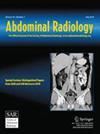Renal pseudotumours in End-Stage renal disease: CT and MRI findings in two rare cases
Abstract
Pseudotumours in chronic kidney disease (CKD pseudotumours) are rare conditions characterized by nodular compensatory hypertrophy of relatively preserved renal parenchyma in CKD. This report presents two cases of CKD pseudotumours identified in the kidneys prior to transplantation, detailing magnetic resonance imaging (MRI) and contrast-enhanced computed tomography (CT) findings, as well as changes observed post-transplantation. On MRI, the lesions appeared hyperintense on T2-weighted images (T2WI) and significantly high value on apparent diffusion coefficient (ADC) map. Smooth vascular penetration was evident within the larger lesions on T2WI. On plain CT, the lesions exhibited slightly lower density compared to the surrounding renal parenchyma. Contrast-enhanced CT revealed that the lesions consisted of hypertrophied renal cortex and medulla; however, the corticomedullary boundary of the lesions was less distinct compared to the surrounding parenchyma. Post-transplantation, the lesions in both cases reduced in size, corresponding with atrophy of the native kidney. In one case, follow-up MRI showed decreased lesion signal intensity on T2WI and ADC map. Unlike compensatory hypertrophy of a normal kidney, CKD pseudotumours are associated with edema. These imaging findings suggest that CKD pseudotumours represent a combination of compensatory hypertrophy and edema and are valuable for diagnostic imaging.

 求助内容:
求助内容: 应助结果提醒方式:
应助结果提醒方式:


